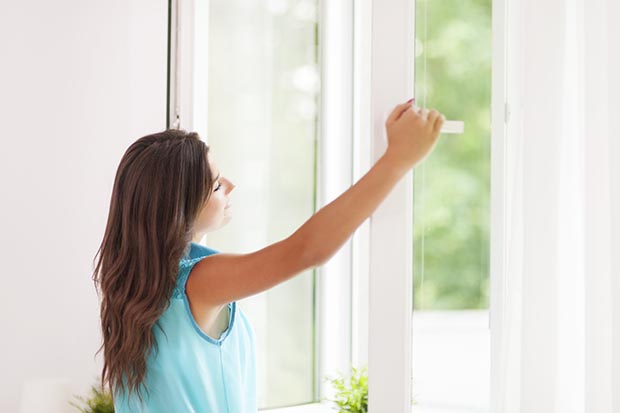How to Improve the Air Quality of Your Home
October 21st, 2015

Often when people think of air pollution the first thing to come to mind is haze or smog that hangs in the humid, summer air. Of course some cities have it worse than others, but the extra moisture in the air in warmer climates allows pollutants to hang around for longer. What most don’t consider is that the air inside your home is even more polluted than the air outside. Chemicals from household cleaners, pet dander, and dust mites are just a few of the pollutants found in the average home. In recent decades, people simply spend more time indoors, putting them at more risk to exposure of harmful pollutants.
This and the fact that home are much more airtight than they once were means that the air quality inside your home is not to be taken for granted. Taking some simple steps to remove these pollutants will keep the air in your home fresh and your family safe from harm.
Tackling the problem from the ground up
The first step to ensuring better air quality is paying particular attention to keeping your floors clean. Of course your regular sweeping and mopping rituals may be sufficient, but the way you carry out these necessary household chores can have a great effect on the air quality of your home.
The biggest problem with sweeping is that it leaves traces of fine dust and cannot reach dirt in cracks and corners as well. A better alternative is to start vacuuming using a vacuum equipped with a HEPA filter. This will reduce the concentration of lead in your home, as well as removing dust mites, pet dander, and even pollen. Other areas that are often left out when it comes to vacuuming are walls and furniture.These areas also accumulate a fair amount of dust and need to be regularly vacuumed.
After a thorough vacuuming, mopping the floors with a microfibre mop is the best next step. Traditional mops simply aren’t up to par with the cleaning abilities of microfibre mops. Another great tip when it comes to improving air quality with mopping is to simply leave out the cleaning solution. Microfibre mops do not require any cleaning solutions to function, so unless you have a smelly spill to clean up, using plain water with your mop will help keep a lot of potentially harmful chemicals out of the air.
Prevention and ventilation
The best way to keep out dirt and other harmful pollutants is to stop them from entering your home in the first place. Using a large, high quality mat outside all your exterior doors will eliminate a considerable amount of dust and detritus that comes in with you from outdoors. An even better idea is to adopt the practice of no shoes in the house, which is a standard practice in many countries.
Once the pollutants are inside it then becomes a matter of how to best deal with them. Air filters and purifiers can do wonderful things in the colder months when you’re keeping your windows closed, but proper airflow throughout your home can be essential to keeping the air fresh and moving pollutants out. In this case, the biggest consideration is having good quality window screens and security doors. The ability to leave your doors open while still feeling safe, as well as ensuring proper airflow throughout your home, will make a huge difference in your ability to combat harmful pollutants in the home.
Final pointers
Taking steps to ensure you have proper ventilation is only half the battle. There are many other measures you can take to give the air in your home a natural and healthy feel. There is actually an alarmingly high amount of chemicals in cleaning products, detergents, and even air fresheners. Switching to fragrance free or naturally scented products and away from anything using artificial fragrance will make a huge difference in the overall air quality in your home. Perhaps the single greatest cause of indoor pollution is smoking.
If you’re a smoker, taking your habit outside will remove the emission of over 4,000 different chemicals from the inside of your home, as well as increasing the happiness of the other people you share your living space with. A great way to freshen up the air inside any home is to add some indoor plants which actually absorb chemical pollutants.
Bottom line is that keeping a clean home is essential to good air quality. But close attention needs to be brought to the products and techniques you use to keep your home clean. Not only that, but having a well ventilated home that lets in plenty of fresh air in and toxic chemicals out will ensure that your efforts to keep your home clean and fresh pay off.
